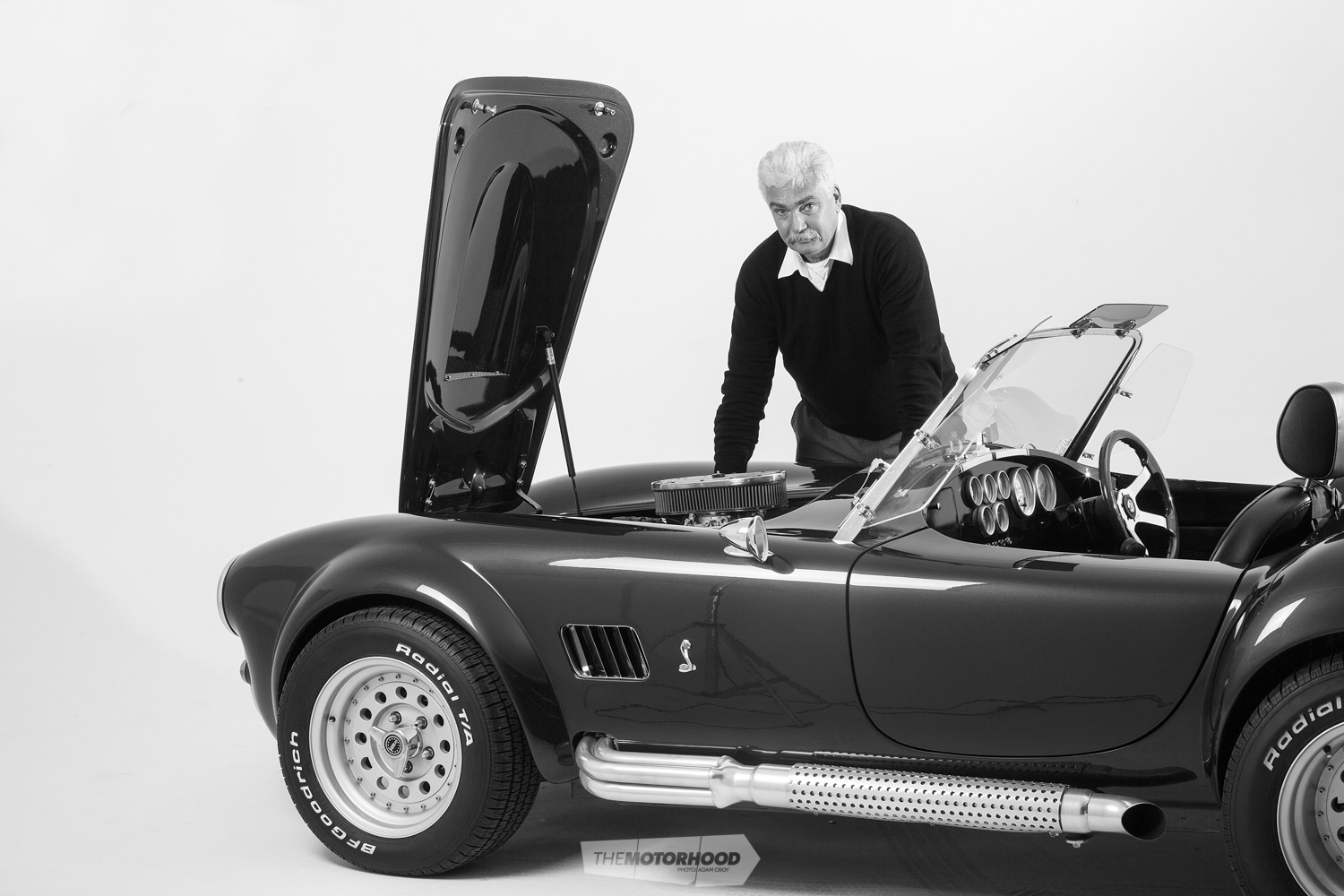The AC car company’s very first sports car — the Ace — appeared in 1953, and over the next 10 years the open-top Ace gained motive power through a variety of engines. Initially, AC fitted its own 1991cc six-cylinder engine into the car. Not especially powerful, this first incarnation of the Ace couldn’t even crack the imperial ton. Improved performance came with the introduction of the 1971cc Bristol straight-six engine — with 93kW on tap, the Ace-Bristol was good for just over 200kph (124mph). Even more grunt came with the arrival in 1961 of the Ace 2.6, powered by a Ruddspeed Ford Zephyr 2553cc six.
Despite all these swaps, the Ace with the best-remembered engine transplant didn’t break cover until 1962, with the first of a breed that has since become a motoring legend — the AC Cobra.
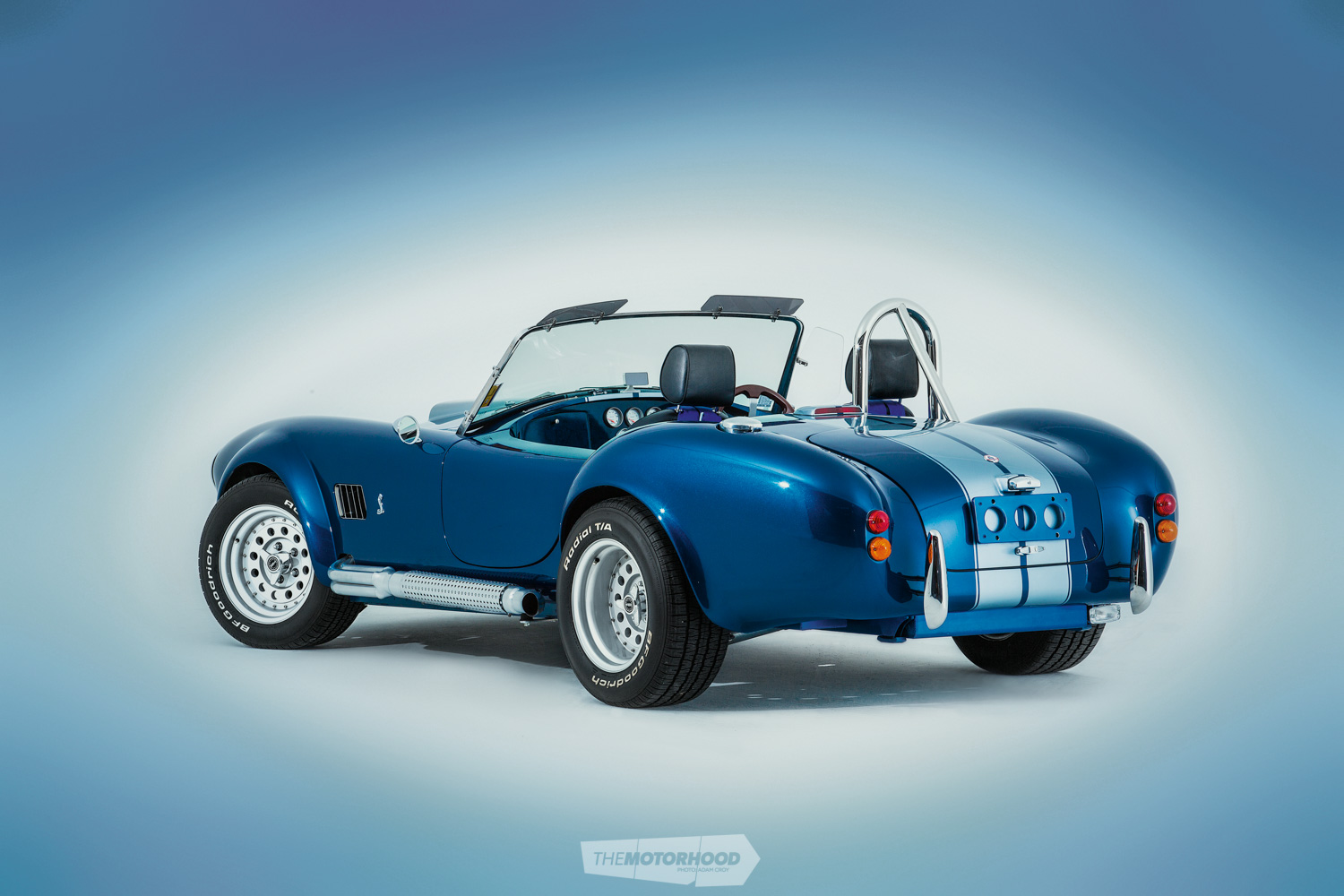
The Cobra’s heady concoction of British roadster and V8 muscle was the brainchild of a Texan race-car driver called Carroll Shelby. He thought it would be a good idea to re-power AC’s lightweight sports car with a Ford V8 engine. The car really took off — literally — with the transformation in power making the new vehicle one of the most desirable of the time.
In 1964, Carroll Shelby constructed FIA (Cobras) alongside Daytona coupés to campaign in Europe against the mighty Ferraris, and, by 1965, he’d succeeded in winning the World Manufacturers Championship with these cars.
It was on the back of this success that the AC Cobra earned its enviable reputation as one of the great classic sports cars.
Today, a Shelby Cobra represents a rare opportunity to indulge in a passion that many dream about but which only the well-heeled can afford. For those with a more modest budget, there are multiple options available to build your very own version of Shelby’s legendary Cobra. Indeed, today the Cobra has become one of the most replicated vehicles of all time, having spawned an ever-increasing plethora of owner-built and factory-turnkey offspring numbering many thousands around the world.
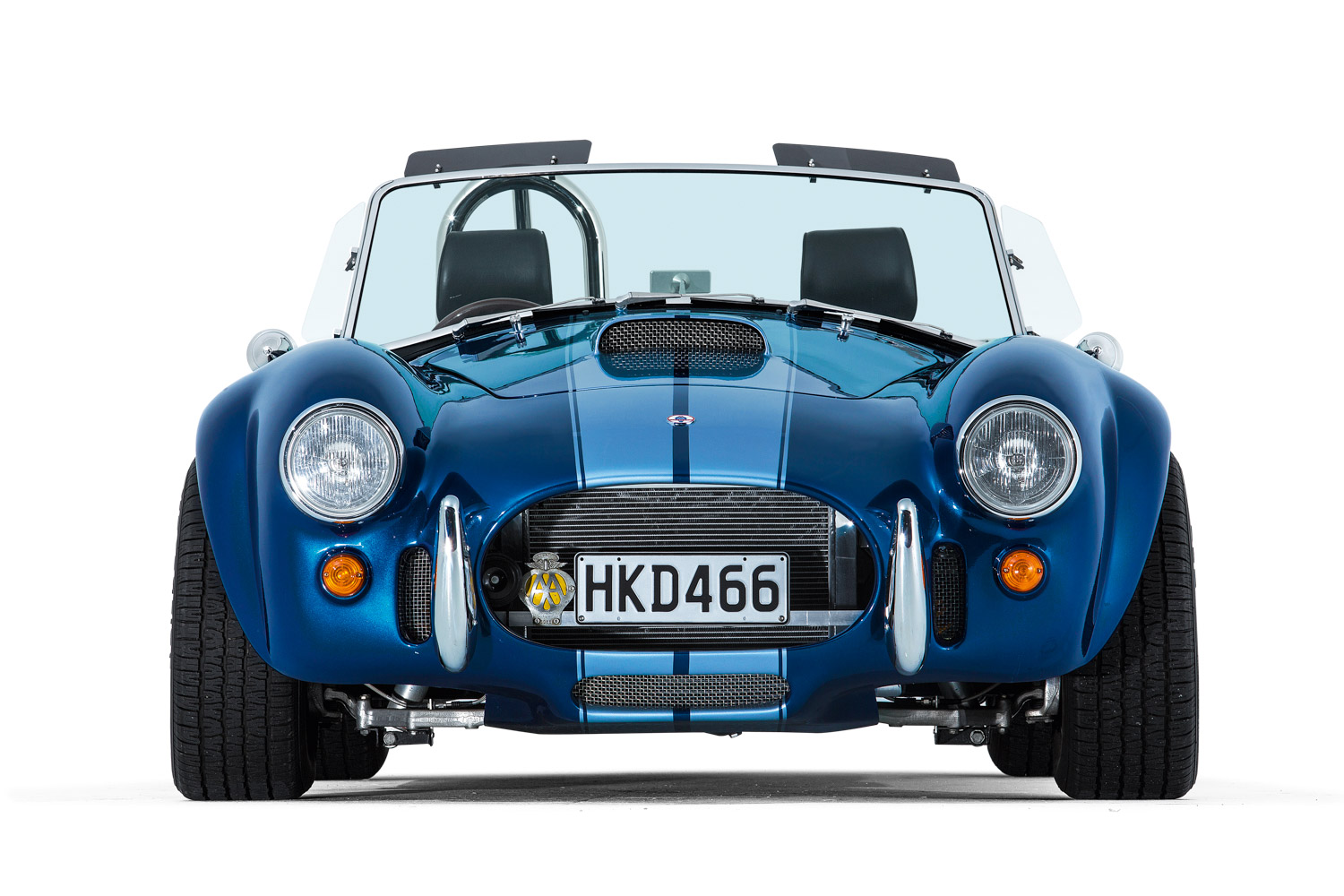
Graeme’s Story
Graeme Linton’s fascination with Shelby Cobras extends back to his school days, when he first saw a photo of a Shelby Cobra in a car book his parents had bought for him. He remembers looking at the Cobra for a long time, totally enraptured by the car’s elegant English style, with feminine and petite curved lines that had been coupled with a large American thoroughbred V8 engine beneath a beautifully sculptured bonnet. To Graeme, this unique combination was undoubtedly a marriage made in heaven, and there was nothing else like it in the world. He knew then that one day he would have to own one.
Fast forward a few decades, and after Graeme turned 50, he said to his wife, Lania, that time was running out, and he wanted to build a Shelby Cobra. With Lania’s blessing and support, Graeme was able to spend the money, and, shortly after, there was a Cobra shell sitting in their garage.
That was seven years ago, and during those years, Graeme carefully and skilfully pieced this stunning machine together as time and money allowed. He admits that completing a tool-making apprenticeship in the mid 1970s was a big plus, providing him with the necessary skills required for such a build. However, he’s always admired the owners of such projects who’ve had no formal engineering training, as they are largely self-taught.
Graeme also spent a couple of years in the late 1970s working in England, machining components and assembling race cars at March Engineering. He then joined a team campaigning a Formula 2 car in the European championship. At that time, he was also on the support crew for his long-time friend Greg Joint, who was attempting to break into the English speedway league on a solo motorbike.
Graeme built his first TQ Midget in the mid 1970s, and won his first-ever race at Western Springs in the first outing of the car. Admittedly, it was from the front, on a very wet surface.
Today, Graeme still likes to get behind the wheel of a race car, and he currently races a 1988 E30 BMW in the very competitive Castrol BMW Race Driver Series — great fun and very low cost compared with other forms of motor sport.
A Family Affair
One other benefit of tackling such a project was that Graeme was hoping his son would become interested in the Cobra build as well, but, alas, no, it appeared that parties and girls were far more interesting than being stuck in a garage all weekend.
Surprisingly for Graeme, it was his daughter, Lauren, who took the most interest in the Cobra build. As she got older, her interest intensified, and as she became more involved in the project, she became extremely useful to her father, not only helping with the painting, but also making decisions on the build. Lauren went on to complete an Automotive Refinishers Apprenticeship, and it was at her shop, Pakuranga Panelbeaters, that the car was dramatically transformed. Lauren carried out most of the preparation work on the Cobra’s body, and applied the undercoat. Graeme’s objective was to achieve a simple, clean look without too much clutter, which is why the two main colours, Electric Blue and Fine Silver (the stripes are silver rather than the traditional white) were chosen. Apparently, Lauren chose the blue from a Mercedes Benz truck she’d seen previously and liked very much.
The finish colours were applied by Ernest Bradley, who did an amazing job, and Graeme says he owes Ernest and Brandon a big thank you for the outstanding paintwork.

It was Lauren also who decided on the ‘snakeskin’ finish for the dashboard. This involved a special process in which the dashboard was lowered into a water bath that had the snakeskin ink floating on the surface. She also found the wheels, after much searching. Graeme was keen to find wheels with circular detailing to match the curvaceous lines of the car. Lauren painted the wheels silver to match the car, and there is virtually no chrome on it, with all the aluminium parts anodized blue and all the other components either polished stainless steel or silver powder-coated.
Graeme reckons his first outing on the road, which was quite literally only a few weeks before this publication went to print, has to rank as one of the most stressful moments he has ever been through. Not only was the Cobra unregistered, but also Graeme’s inner fear that something bad was going to happen was realized at the first set of traffic lights. His wife, who was driving behind him, started frantically tooting the horn and pointing at the car.
My God, thought Graeme, as he instantly had visions of fire billowing out from under the bonnet or something major having fallen off. Fortunately for Graeme’s tender nerves, it transpired that it was only that one brake light was slightly brighter than the other. On learning this, Graeme had to contain himself to avoid being banished to the couch for the next week. At the next intersection, a large Allen key that Graeme had left lying somewhere under the bonnet fell on to the road, making that loud spring-steel sound as it did — another heart attack.
Graeme quite rightly points out that when building or restoring a car, you tend to get too close to it. Other builders have confirmed the same thing has happened to them, and some are still are on edge when they take their car for a drive.

The Build
The reason Graeme chose the Aussie-made DRB Cobra kit was primarily because he felt it had a more authentic body shape than some of the other kits he’d checked out. DRB has experienced huge success, selling over 350 Cobra replicas in Australia alone. The DRB Cobra is the most award-winning replica in Australia, a testament to its quality and ease of construction.
Graeme’s car arrived complete with chassis, body, roll-bar, and windscreen supplied. Everything else required for the build needed to be sourced from donor cars or fabricated.
The kit is designed for Jaguar XJ6 front and rear suspension components, with all donor parts being cleaned, sandblasted, and powder-coated before installation onto the chassis along with Koni shock absorbers and King springs. Graeme also chose to replace all bearings and bushes during this process. A Jaguar XJ6 differential was used, while a modified Ford Falcon handbrake set-up was fitted. A rack sourced from a Volvo 244 took care of the steering department. At the same time, all four XJ6 brake calipers were completely rebuilt and fitted, while the underside of the car and engine bay was painted
The next step was the engine. Graeme decided to run with a 1964 Ford Mustang 289ci (4.7-litre) V8 engine, primarily because he wanted to keep the weight of the Cobra to a minimum. The engine he sourced was in good running condition, so Graeme decided not to completely strip it, simply giving it a good clean and repaint. The sump and exhaust manifolds were powder-coated along with the Edelbrock intake manifold. A new Edelbrock fuel pump and electric water pump were fitted, along with a set of finned Edelbrock rocker covers to complete the engine, which was hooked up to a reconditioned Mustang T5 four-speed manual gearbox. The radiator and fuel tank are custom-made items.
As the interior sports-style seats came as part of the original kit, all that was required to complete the build was to have them upholstered in black vinyl and the front windscreen fitted … well, not quite. The exhaust headers were handmade by Dave McLoughlan at DC Trading Ltd, who took a full painstaking week to fit them into a very tight space.
One final item remained: the AA badge that had, in 1952, originally been on the Triumph Thunderbird motorcycle owned by Graeme’s father. This badge was given pride of place next to the front number plate — a nice touch.
Lauren’s Story
Unbeknown to her father at the time, Lauren sent us through a few notes of her own regarding the Cobra build. We wouldn’t imagine too many young girls have had the opportunity, or, in most cases, the inclination, to work alongside their father on such a project — this is her story in her own words.
“As a 22-year-old petrolhead female, having a father who is a race-car driver, car-loving, tool-making genius with a full-on automotive background has always been accommodating. I was in my first year of college when I came home to a bare fibreglass shell of an AC Cobra replica. I looked at Dad, with his cigar and red wine, staring in admiration. Little did he know all the work, stress, and patience that were to follow.
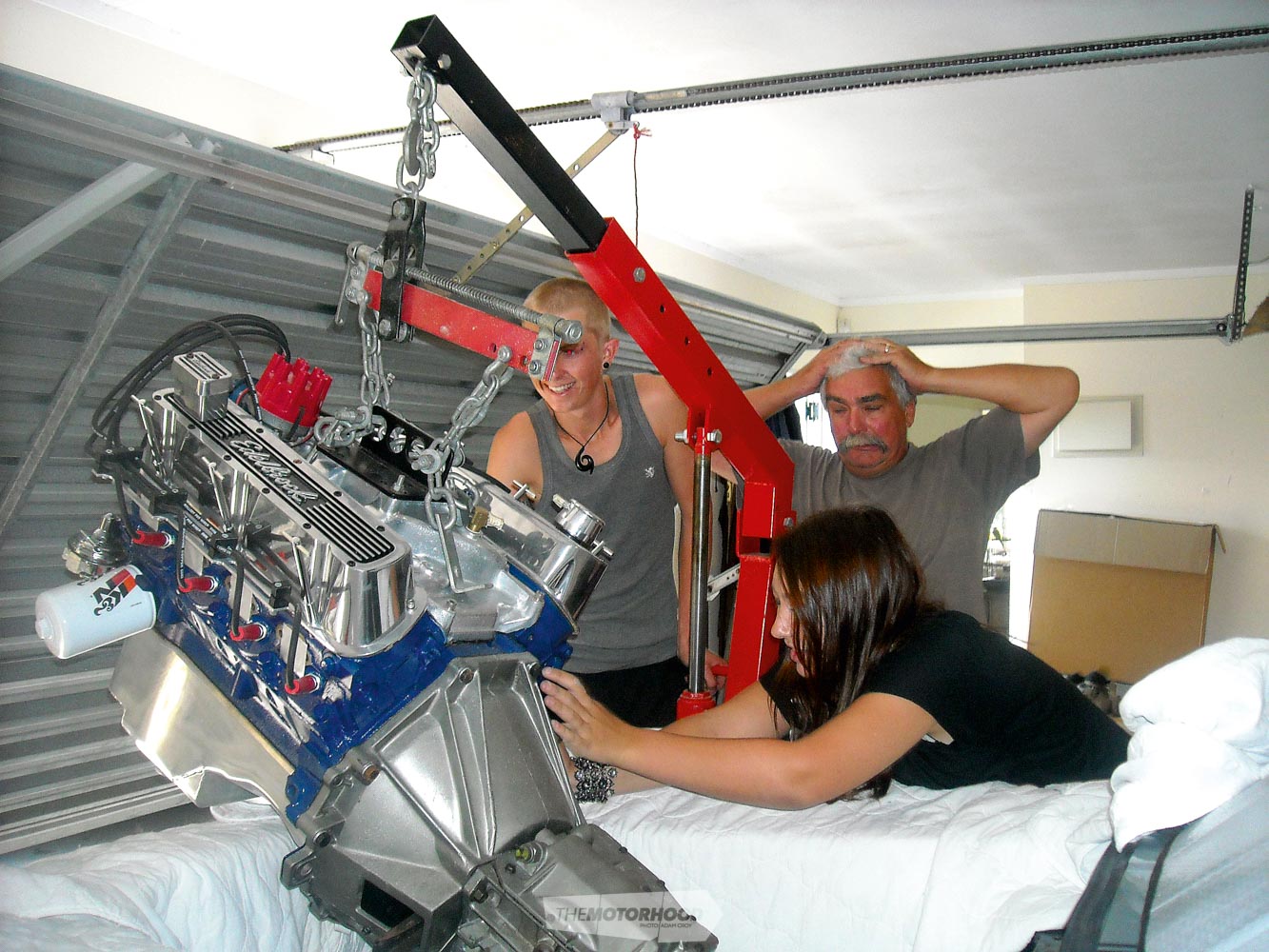
“Four years later I was offered an apprenticeship in Automotive Refinishing, and my first thought was ‘finally, a decent input of my own I can apply to the Shelby.’ I was working under the wing of an amazing painter, Ernest Bradley, when the Shelby was finally brought in for a pile of work. After several long (free labour, Dad!) nights of blocking, shaping, bogging, and priming, it was time to start looking at colours. Late one night, Dad and I were having a chat about the next step, when he announced one risky statement to me. ‘Lauren, in terms of colours, it’s in your hands.’ I cannot express how tempted I was to paint it hot pink with those silly headlight eyelashes sticking out, but as it was, I loved the car just as much as him.
“I searched and hunted through the AkzoNobel colour charts, and placed my order for a subtle-style electric blue. A few days later, a four-litre tin turns up and I’m excited as hell. It’s time to spray the inners [inner door and bonnet surfaces]! I pop open the top, and immediately realize they’ve sent out the wrong colour. To my amusement, the blue that arrived was absolutely incredible. I stirred it up, pulled up the mixing stick, and watched the thick blue pearl and coarse metallic pigments run down the vibrant blue-covered stick, and thought to myself, ‘perfect!’
“The day finally came around: I jacked up the Shelby in the booth, wiped it down and gave it a tac. I mixed up the paint and threw it in the gun, when Ernest said to me — ‘this is your last chance to change your mind.’ I’m not sure if it was the fact it would have been my first repaint, or the pure reality of it being Dad’s Shelby, but I majorly lacked confidence in my painting on that day, and handed the gun over to Ernest. That decision was something I’ll always hugely regret, but I knew I was putting my trust into a flawless painter. Ninety minutes later, it’s all cleared, and looking absolutely beautiful.
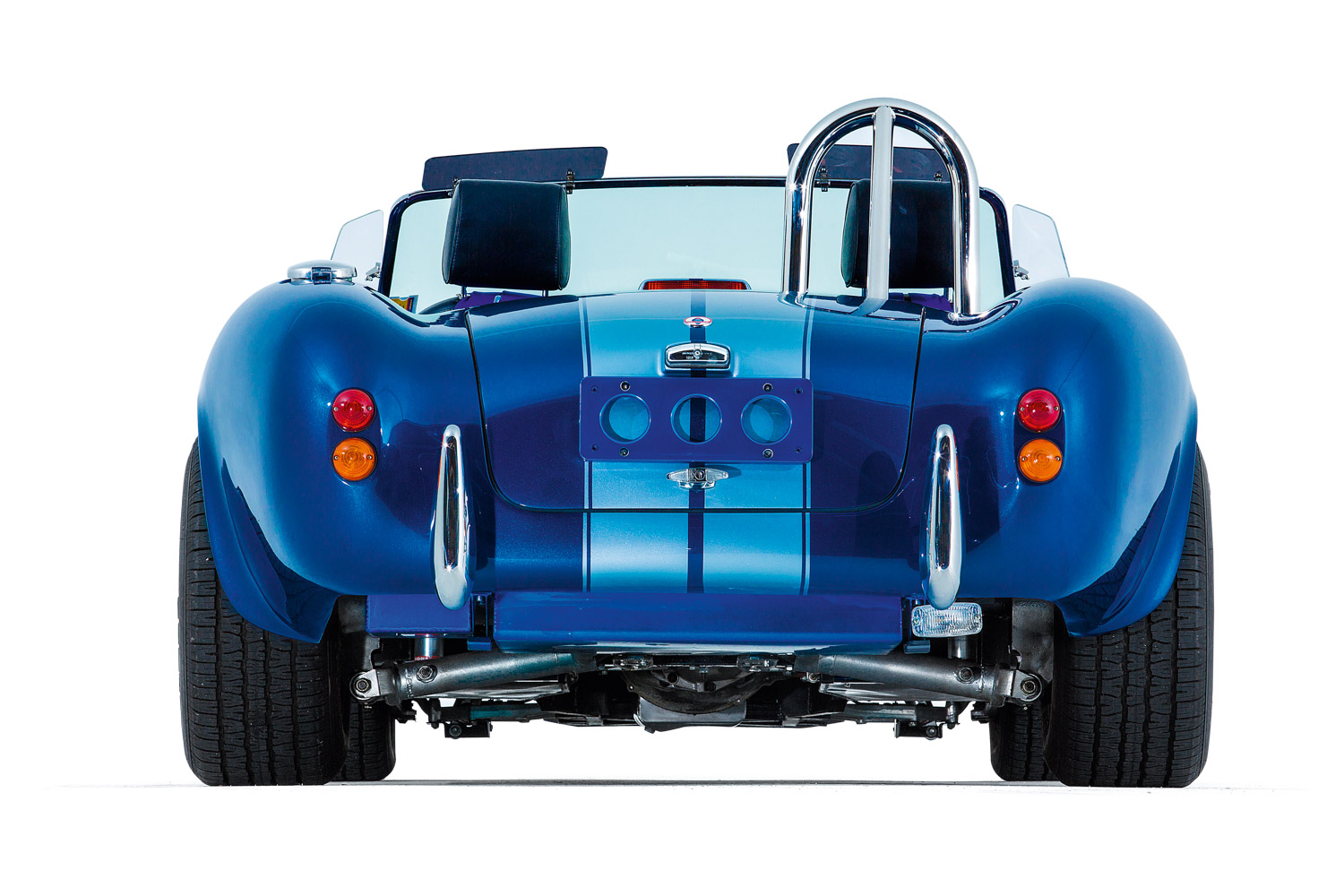
“A few days later it’s time to do the fine silver stripes. All masked up in the booth ready to spray, I took one last look at it and realized the guy who came in had completely misjudged the alignment of the stripes. Ernest took to the job and brought out his perfection skills and we were ready to go again. The stripes were painted, and an amazing flow-coating job was applied a few days later. Finito!
“Ernest and I had decided to leave the Shelby sitting in the booth after the last lick of paint, and play a little prank on Dad. My parents had only just returned from a small holiday somewhere in New Zealand, and I called Dad to say we had a major issue on the car causing a hold on everything, so we needed him to come down and make a call on something. Booth lights on, doors wide open, and around the corner comes one paranoid owner. He takes one glance at the car and realizes what we have done, and that everything was now complete. He slowly walked towards the car, glassy eyes and one large cheesy smile, mission accomplished. I’ll never forget the feeling of happiness I got from the look on his face, it was absolutely priceless.
“He says it was seven years of work, I say it was 10 — but either way it was one incredible accomplishment, and I’m so proud of him every time I look at it. Building that car took amazing skills, serious patience, and knowledge I would never be capable of. On that note, I congratulate my father, as he’s far too modest to express his intelligence and talent that has carried him to this day. What a long 10 years!”
